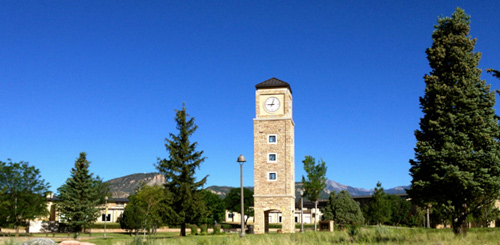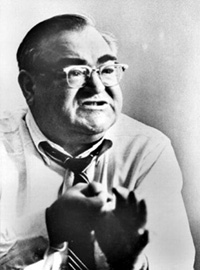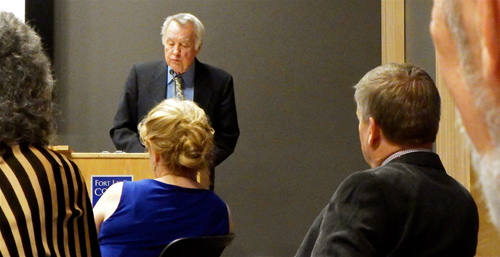Entries tagged with “Dave Mitchell”.
Did you find what you wanted?
Tue 27 Jun 2023
Seventeen years ago I launched this blog which I had been publishing as a newspaper column. For now it’s time to close the curtain on Sparsely Sage & Timely. In the past two to three months, a bout of Parkinson’s disease has substantially crippled me. My lack of balance when standing and walking pretty much confines me to one floor at home. I can’t drive, and just the walk down to where we park cars is so exhausting I rarely leave home.
I’m increasingly forgetful re basic matters. Just last week I had to tell my youngest stepdaughter that for the moment I couldn’t remember how many times I’ve been married. (Her mother in Guatemala was my fourth wife.) Lynn, my fifth wife, and I are about to start our fourteenth year together.
I knew nothing about Parkinson’s disease until I was diagnosed. Here’s how Google defines it: “Parkinson’s disease is a brain disorder that causes unintended or uncontrollable movements, such as shaking, stiffness, and difficulty with balance and coordination. Symptoms usually begin gradually and worsen over time. As the disease progresses, people may have difficulty walking and talking.”
However I’ve just started a course of a dopamine-producing medicine. Parkinson’s is associated with lower dopamine production in the brain, so I’m hoping the new med will be as effective as it’s been described by optimists and medical personnel.
In the meantime, I’ll let the curtain close.
—Dave Mitchell
Sat 5 Jul 2014
My life companion Lynn Axelrod and I have just returned from Durango, Colorado, where we attended an annual conference of the International Society of Weekly Newspaper Editors at Fort Lewis College.
Two posts will deal with our adventures. The second will concern transportation, ranging from driving “the highway to hell” (in the words of the Durango Herald) to travel by old-fashioned steam engine and modern Amtrak. Because this first post deals with my receiving a journalism award, I’ve let Lynn prepare it.

Fort Lewis College in Durango, Colorado, opened in 1891 as a boarding school for Native American Indians and remained so until the 1930s when it became a two-year college. In 1956, it was relocated from the town of Hesperus to its present location 18 miles to the east and became a four-year college. Under federal law, Indian students attend it tuition free. (Photo by Tim Waltner, member of the International Society of Weekly Newspaper Editors and publisher of the Freeman Courier in South Dakota)
By Lynn Axelrod
The highest international award in the English-speaking world for editing a weekly newspaper went to Dave Mitchell of Point Reyes Station last week.
Mitchell, 70, who retired in November 2005, edited and published The Point Reyes Light for 27 years. On June 28, Mitchell received the award in Durango, Colorado, during the annual conference of the International Society of Weekly Newspaper Editors (ISWNE).
Editors from throughout the United States and Canada, as well as from England, Scotland, and Australia, were on hand.
 Mitchell’s “Eugene Cervi Award” is named after the late editor and publisher of the Rocky Mountain Journal in Denver, where some Colorado politicians once called the liberal newspaperman “the most dangerous man in Denver.”
Mitchell’s “Eugene Cervi Award” is named after the late editor and publisher of the Rocky Mountain Journal in Denver, where some Colorado politicians once called the liberal newspaperman “the most dangerous man in Denver.”
Eugene Cervi (at left)
After he died in 1970, the New York Times described Cervi as “one of the most outspoken voices in American journalism,” ISWNE executive director Chad Stebbins has written.
The Eugene Cervi award recognizes “a newspaper editor who has consistently acted in the conviction that good journalism begets good government.”
The award is presented not for a single brave accomplishment, however deserving, but for a career of outstanding public service through community journalism and for adhering to the highest standards of the craft with the deep reverence for the English language that was the hallmark of Gene Cervi’s writing.
The award also recognizes consistently aggressive reporting of government at the grassroots level and interpretation of local affairs.

Chad Stebbins (left), executive director of ISWNE, and Mitchell standing with the Eugene Cervi Award, which is represented by a street-vendor “Newsman.”
Although the four-day conference was held in Colorado this year, ISWNE’s annual conferences are often held abroad: Calgary, Alberta, 1994; London, Edinburgh, Cardiff & Dublin, 1995; Halifax, Nova Scotia, 1999; Victoria, British Columbia, 2000; Galway, Ireland, 2003; Edmonton & Fort McMurray, Alberta, 2005; Charlottetown, Prince Edward Island, 2009; Coventry, England, 2011. In 2016, the group will head to Australia.
In 1979 when Mitchell and his former wife Cathy published The Light, the newspaper received the Pulitzer Prize for Meritorious Public Service. It was only the fourth year since the prizes were established in 1917 that any Pulitzer had gone to a weekly newspaper.
The prize was for an investigation and editorial crusade warning about violence and other illegal activities by the Synanon cult. Synanon, which officially dissolved in 1991, was headquartered on Tomales Bay in Marshall during much of the 1970s.
Mitchell’s new book, The Light on the Coast, which was coauthored by Jacoba Charles, includes key articles and opinion pieces about Synanon. Using news stories published when events occurred, The Light on the Coast tells the history of West Marin since the paper’s founding in 1948. At ISWNE’s request, Mitchell gave an hour-long talk on Synanon and other stories from the book. The Light’s reports on five waves of ethnic immigration to West Marin beginning in the 1850s were a major part of his talk.

Fort Lewis College, which is named after Lt. Col William Lewis, a hero of the Union Army in the Civil War, is in the San Juan Mountains of southwestern Colorado at 6,872 feet in elevation. It borders wildlands, and a small herd of mule deer graze the campus undisturbed.
Nominating Mitchell for the award were San Francisco Chronicle reporter and columnist Carl Nolte, retired Santa Fe Reporter editor and publisher Richard McCord, and California Newspaper Publishers Association executive director Thomas Newton.
Newton praised Mitchell for trying to make The Light the “New York Times of West Marin” and for his “swashbuckling journalism for the Hearst-owned San Francisco Examiner, including trips to El Salvador and Guatemala to cover the upheaval and insurrection of the time [1982-83].”
Commenting on Mitchell’s Pulitzer-winning reporting Nolte wrote, “Synanon was very tough. Big city papers went after the organization but were scared off by threats of lawsuits. But nobody and no lawsuit could stop The Light.”
He added, “Don’t think The Light is a one-trick pony. Mitchell has taken on the Park Service, which runs the [Point Reyes] National Seashore with an iron hand. He has also followed the immigration patterns on the land, from the now nearly vanished Miwok Indians to newer people.

Richard McCord (seen introducing Mitchell at ISWNE’s awards banquet) is best known nationally for his 1996 book The Chain Gang, which exposed the Gannett newspaper chain’s illegal efforts to drive competitors out of business.
In his letter of nomination, McCord focused on The Light’s Synanon exposé: “Despite warnings that he might be in physical danger, Dave Mitchell continued writing about Synanon in stories and editorials.”
During the awards dinner, Mitchell told the crowd he “had thought he was fading away like the old soldiers cited by Gen. Douglas MacArthur in his farewell speech to Congress,” ISWNE’s June 29 newsletter reported. “To me this is like winning a second Pulitzer. It had been so many years since I had put on a tie, I couldn’t remember how to tie it.”
Tue 11 Feb 2014
Approximately 15 inches of badly needed rain fell in drought-stricken West Marin during the past week, with much of it falling last weekend.
Although the rain flooded numerous roadways, including sections of Highway 1, roughly 50 people showed up at Tomales Regional History Center Sunday to hear Jacoba Charles and me read a few selections from our book, The Light on the Coast: 65 Years of News Big and Small as Reported in The Point Reyes Light.
In December, the History Center published the book, which draws upon news coverage in The Light to tell the post-World War II “history of West Marin’s lively little towns and their Pulitzer Prize-winning weekly newspaper.”
Jacoba and I looked through more than 3,300 back issues in choosing representative selections of writing, photography, and political cartoons to include in the book. We then wrote background narratives for many of the news stories.

The crowd filled the History Center’s conference room, where awards and other mementos from the newspaper’s past were on display. After our readings, Jacoba and I signed copies of the book while directors of the History Center served refreshments. (Photos by Lynn Axelrod)

Jacoba started the readings with Wilma Van Peer’s 1998 account of working for the paper’s founders, Dave and Wilma Rogers, half a century earlier. Mrs. Van Peer described Dave as a “little man” with a “nose for news” who liked to “tease” people.
The Light, which was called The Baywood Press for its first 18 years, has had 10 sets of owners in the past 65 years. I published the paper for 27 of those years and wrote the chapters covering news from the first eight ownerships.
Jacoba reported for The Light during its previous ownership and is on the paper’s board of directors under today’s owner, Marin Media Institute. She compiled the chapters dealing with news coverage under the last two sets of publishers.

I unexpectedly found myself getting choked up while reading aloud an item from a June 22, 1950, column of social news:
“Mr. and Mrs. Anton Kooy and sons Peter, 13 years, and Walter, 11 years, have arrived at Blake’s Landing ranch from Amsterdam, Holland. They have come to join their friends Herbert Angress and Bill Straus, and Anton is going into business with Bill and Herbert. The Kooys will live at the Clark home, which the Harold Johnstones now occupy, near Marshall.
“During the last war, Mr. and Mrs. Kooy took Herbert Angress in to stay with them, thus saving his life from the Nazis. The two boys will be attending the Tomales schools, Peter being of high school age.”
While reading this short item to the crowd, I was once again struck by the horrendous danger in which Herb Angress had found himself and by the Kooy family’s heroism in putting themselves at risk to shelter him. Then, five years after World War II ended, they followed him to West Marin.
What choked me up was the sudden realization that when this potentially tragic drama came to a happy ending in Marshall, it made West Marin seem like part of a wartime miracle.

Jacoba reads the late historian Jack Mason’s account of former publisher Don DeWolfe changing the paper’s name from Baywood Press to Point Reyes Light in 1966. Full of wry humor, the story is set in the Station House Café, which Mason operated for awhile after he retired from an editor’s post at The Oakland Tribune.

Victor Reyes, who writes a Spanish-language column for The Light, filled in for Dewey Livingston during the readings.
The book’s designer, Dewey Livingston, lives in Inverness where he is the historian at the Jack Mason Museum of West Marin History. He had been scheduled to take part in the readings but had to bow out at the last minute. Second Valley Creek behind his house was flooding and undercutting his bedroom, forcing Dewey to stay home and deal with the rising water.
The Light on the Coast reprints the paper’s entire series on the five waves of ethnic immigration to West Marin during the past 160 years. To research the series, the newspaper sent reporters abroad four times in nine years, to Croatia, Northern Ireland and the Irish Republic, Switzerland’s Italian-speaking Canton of Ticino, Portugal’s mid-Atlantic Azores, and the Jalostotitlán region of Mexico.
Victor, who was one of the reporters on the immigration stories from Mexico, described Jalostotitlán and two neighboring towns. Most of West Marin’s Mexican-immigrant families hail from that area.
He stressed how traditional and conservative people are in Jalos (the city’s nickname) although it is only a 90-minute drive from Guadalajara. The priest virtually runs the city, Victor said.
West Marin’s non-Latino residents that are familiar with large Mexican municipalities, such as Mexico City, may think they understand the culture of Mexican-immigrant residents here, Victor said, but Jalos is a world apart, and the difference can sometimes lead to confusion.
Two more readings and book signings are scheduled in West Marin. From 3 to 6 p.m. Saturday, March 1, there will be a reading, a public open house, and a reunion of former Light staff in the newspaper’s new office behind the Inverness Post Office.
Point Reyes Books will sponsor a third reading and book signing at 3 p.m. Sunday, March 9, in Point Reyes Station’s Presbyterian Church.
Sun 8 Dec 2013
The April 12, 1956, edition of Point Reyes Station’s Baywood Press reported: “Mrs. Joe Curtiss’ television set caught fire last week, and the wall behind the set began burning.
“Before the fire department could answer the call, Margie picked up the set, threw it out the window, and proceeded to extinguish the blaze.”
That was the entire report, but Margie must have been a hardy soul because that early TV would have been big and heavy as well as hot.
 The Baywood Press, as The Point Reyes Light was called for its first 18 years, began publication on March 1, 1948.
The Baywood Press, as The Point Reyes Light was called for its first 18 years, began publication on March 1, 1948.
The newspaper’s coverage of the past 65 years of West Marin news, big and small, is the focus of a book its publisher, the Tomales Regional History Center, has just released.
The book’s cover at left.
I’m particularly interested in the book, The Light on the Coast, because I, along with Jacoba Charles, authored it.
The graphic artist was Dewey Livingston, formerly production manager at The Light. He is now the historian at the Jack Mason Museum of West Marin History and is an historian for the National Park Service.
The Light is in its 10th ownership, Marin Media Institute, and the evolution of the newspaper itself is part of the story. As editor and publisher for 27 years, I was responsible for the chapters covering the first eight ownerships. Jacoba, who is on The Light’s board of directors and formerly was a reporter for the paper, was responsible for the most recent two.

Flooding in Bolinas. The ferocious storms that periodically hit the coast have always received extensive coverage in The Light.
Highlights of the 354-page book include the evolution of West Marin agriculture; the effects of the arrival of the counterculture on local politics, law enforcement, and the arts; the creation of the Point Reyes National Seashore and the Golden Gate National Recreation Area.
Examples of The Light’s Pulitzer Prize-winning coverage of violence and other illegal activities by the Synanon cult are, of course, included in The Light on the Coast.
The newspaper’s complete series on the five historic waves of immigration to West Marin is also a central chapter.
The forefathers of many longtime families in West Marin arrived in immigrations from specific locales in: Ireland, Switzerland’s Italian-speaking Canton of Ticino, Croatia, and Portugal’s mid-Atlantic Azores. Researching their journeys to West Marin, as well as the more-recent immigration from Mexico, involved sending Light reporters abroad four times between 1988 and 1997.
 This illustration for Sheriff’s Calls by cartoonist Kathryn LeMieux’s was often used in Western Weekend editions. The final section of our book consists of some of the more unusual Sheriff’s Calls from the the past 38 years.
This illustration for Sheriff’s Calls by cartoonist Kathryn LeMieux’s was often used in Western Weekend editions. The final section of our book consists of some of the more unusual Sheriff’s Calls from the the past 38 years.
The Light on the Coast features, along with a variety of news and commentary, a sampling of cartoons, advertising, and photography (including 10 portraits by Art Rogers). My partner Lynn Axelrod and I reviewed almost 3,000 back issues of The Point Reyes Light/Baywood Press in compiling the book. Jacoba reviewed more than 400. After making our selections, she and I wrote background narratives for many of them.
Those who’ve read the book have had good things to say about this approach of presenting West Marin’s history through the pages of The Light. Commenting on the book, San Francisco Chronicle reporter and columnist Carl Nolte writes: “The Point Reyes Light is a great window into a fabulous small world.”
Dr. Chad Stebbins, executive director of the International Society of Weekly Newspaper Editors, is likewise enthusiastic: “Dave Mitchell and The Point Reyes Light are synonymous with top-shelf newspapering. Dave is one of the few small-town editors ever to win a Pulitzer Prize; his investigation of the Synanon cult is a textbook example of tenacious reporting. His witty and colorful anecdotes always make for good reading.”
The Light on the Coast is available at Point Reyes Books for $24.95 plus tax.
It can be ordered online from the Tomales Regional History Center bookstore for $29.95 including tax and shipping.













